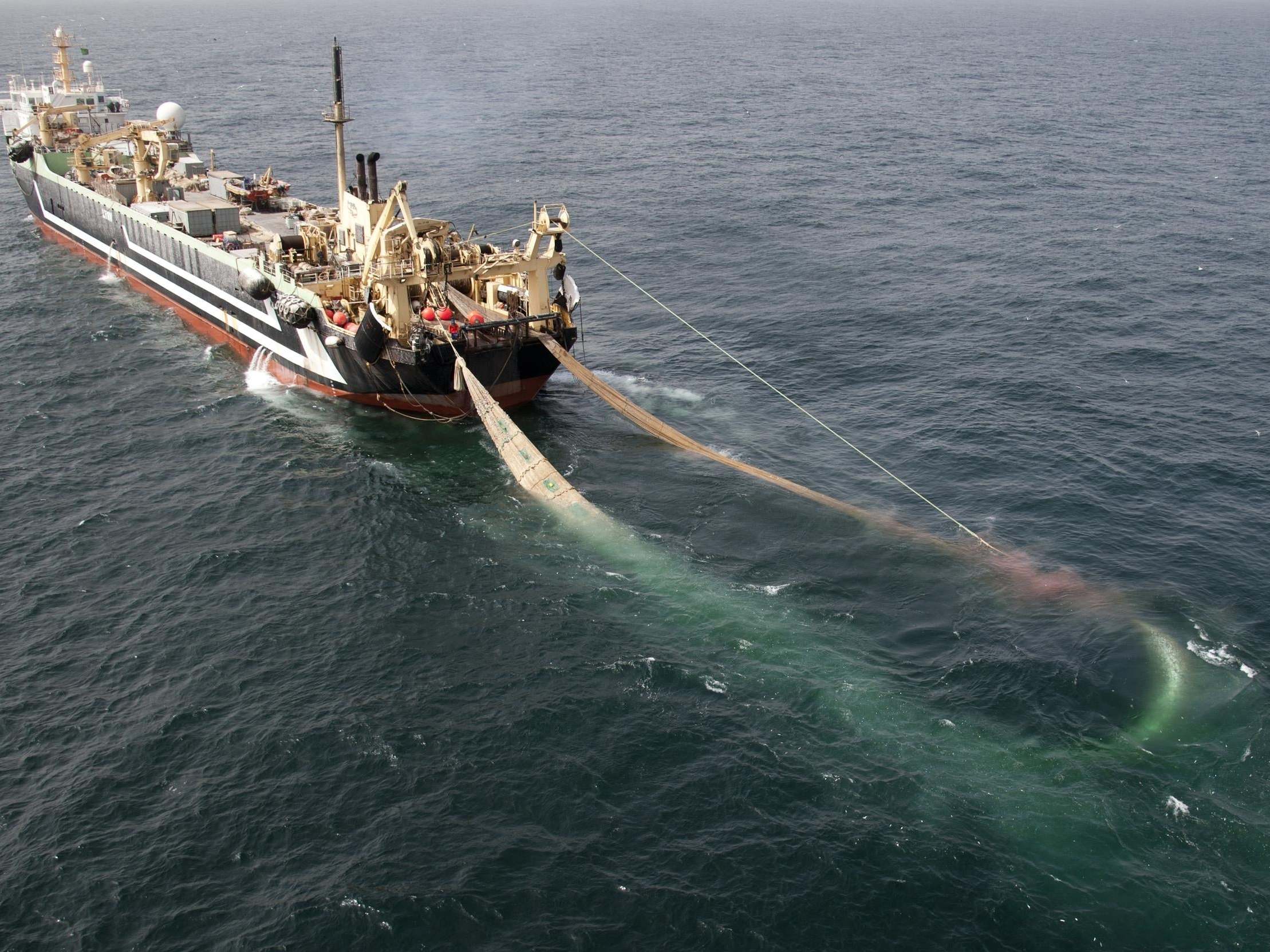Vast European ‘supertrawlers’ use in UK marine protected areas up by over 1,000% in three years
None of these ships – which can store thousands of tonnes of fish – are British owned

Your support helps us to tell the story
From reproductive rights to climate change to Big Tech, The Independent is on the ground when the story is developing. Whether it's investigating the financials of Elon Musk's pro-Trump PAC or producing our latest documentary, 'The A Word', which shines a light on the American women fighting for reproductive rights, we know how important it is to parse out the facts from the messaging.
At such a critical moment in US history, we need reporters on the ground. Your donation allows us to keep sending journalists to speak to both sides of the story.
The Independent is trusted by Americans across the entire political spectrum. And unlike many other quality news outlets, we choose not to lock Americans out of our reporting and analysis with paywalls. We believe quality journalism should be available to everyone, paid for by those who can afford it.
Your support makes all the difference.Supertrawlers are enormous. Also known as factory trawlers, these fishing vessels can be over 300-feet long, may stay at sea for weeks or months catching thousands of tonnes of fish, and their supersized nets – up to a mile long – mean bycatch includes dolphins, porpoises and seals.
But these controversial ships are now more common in UK marine protected areas than ever before, with supertrawler fishing time double what it was for the whole of 2019 in just the first six months of 2020.
According to a Greenpeace investigation, during 2019, supertrawlers spent 2,963 hours fishing in 39 protected areas, while in the first six months of 2020 supertrawlers spent 5,590 hours fishing in 19 protected areas.
The use of these ships around the UK has grown spectacularly rapidly. In 2017, supertrawlers spent just 475 hours fishing in UK protected areas. The figures for 2020 represent a 1077 per cent increase.
Greenpeace said 23 supertrawlers have been operating in UK waters in 2020 so far. “None of these supertrawlers are UK owned,” the organisation said.
Supertrawler adaptations include pumps which allow fish to be pumped aboard, so nets don’t even have to be lifted aboard. The fish are pumped out of the sea, processed, frozen, and then the boat moves on.
The Lithuanian-registered supertrawler ‘Margiris’, which caused anger when it was seen off the UK coast in 2019, is the world’s second-largest fishing vessel and can store over 6,000 tonnes of fish.
Chris Thorne, an oceans campaigner at Greenpeace UK, said: “Our Government cannot continue to allow supertrawlers to fish with ever increasing intensity in parts of our waters that are supposed to be protected. It must step in and put a stop to industrial supertrawler operations within our offshore marine protected areas, something which will be possible after Britain leaves the Common Fisheries Policy.
“Industrial fishing operations have no place in our protected areas. At least 30 per cent of the UK’s waters should be off limits to all industrial fishing activity in a network of fully or highly protected marine areas. A good start towards achieving this would be to ban supertrawlers from fishing in our protected areas for thousands of hours every year.”
There is little support for such fishing techniques in the UK, with the public overwhelmingly supportive of banning supertrawler operations in UK Marine Protected Areas.
A YouGov poll commissioned by Greenpeace earlier this year found 4 in 5 UK adults back a ban, with support cutting across political divides.
Last week over 50 MPs signed an open letter to the environment secretary George Eustice urging him to commit to a ban on supertrawler operations in UK MPAs.
“A ban on supertrawlers operating in UK MPAs would be the first step towards designating a network of fully or highly protected marine areas,” Greenpeace said.
“These should cover at least 30 per cent of the UK’s waters by 2030, to bring the UK in line with the 30x30 target of having 30 per cent of the world’s oceans fully protected by 2030.
A Greenpeace petition, calling for a ban on supertrawlers operating in UK MPAs, has so far gathered 214,000 signatures.
Join our commenting forum
Join thought-provoking conversations, follow other Independent readers and see their replies
Comments